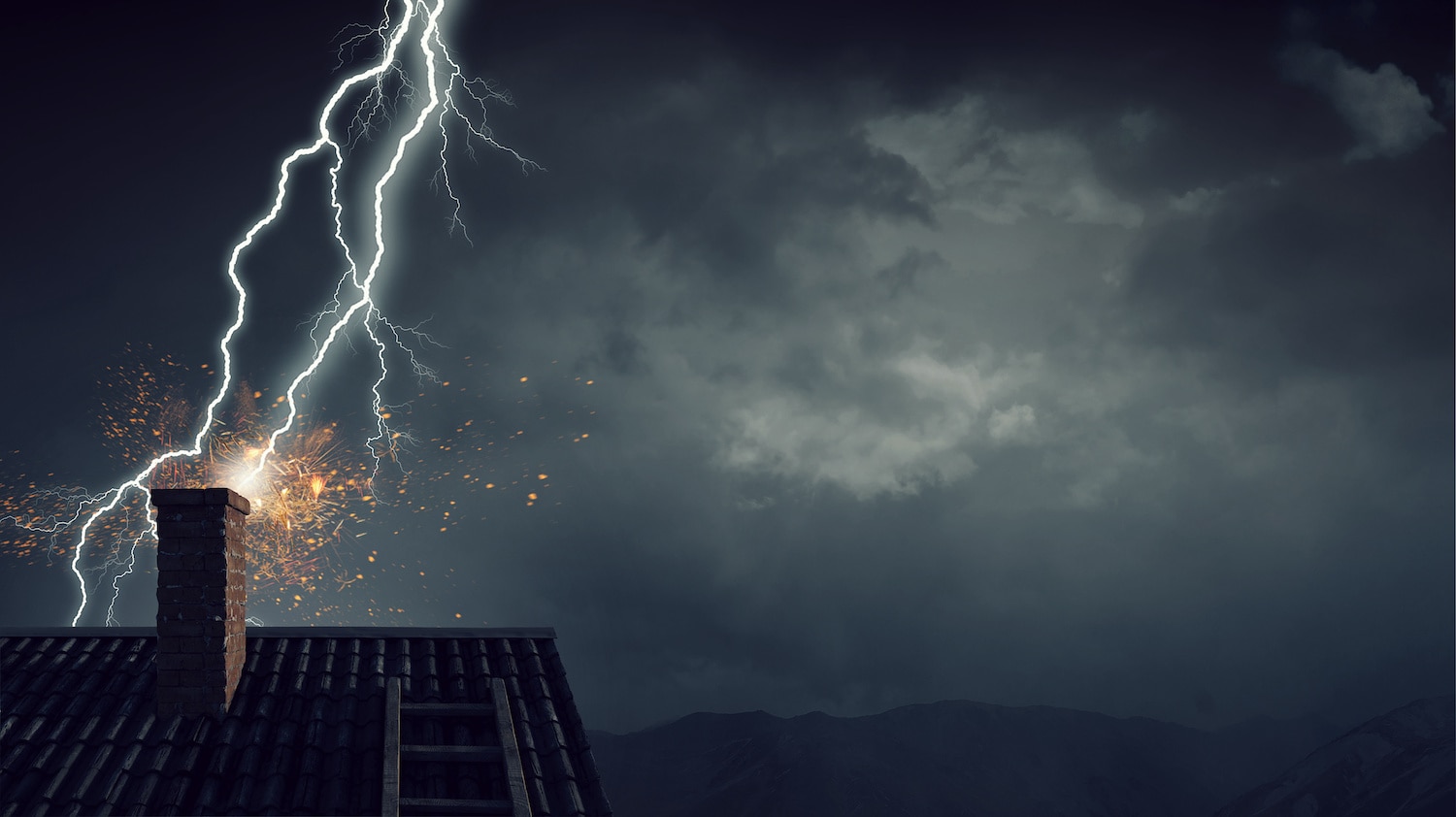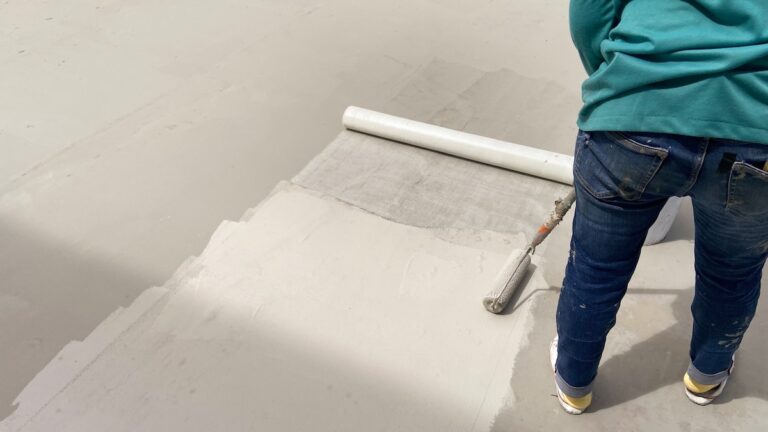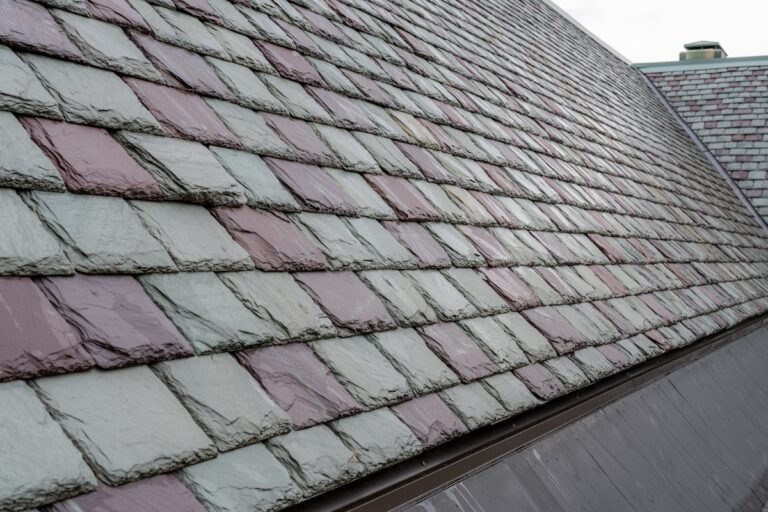Your home’s roof is sturdy and reliable, working hard throughout the year to keep you heated, cooled, and protected from harsh weather. Although roofing systems are incredibly strong, so are the storms you see battering towns and cities across the United States more and more these days, leaving behind a trail of destruction in the form of roof storm damage.
With that said, we’re here to teach homeowners like you about:
- The ways roof storm damage occurs
- What storm damage looks like
- How to deal with roof storm damage when it happens to you
If you’re concerned that your home might incur some serious damage after a storm, keep reading. We’ll dive into everything you need to know about storm-damaged roofing right here so that you’re prepared next time a storm rolls through town. Then, you can schedule home services with a contractor you trust.
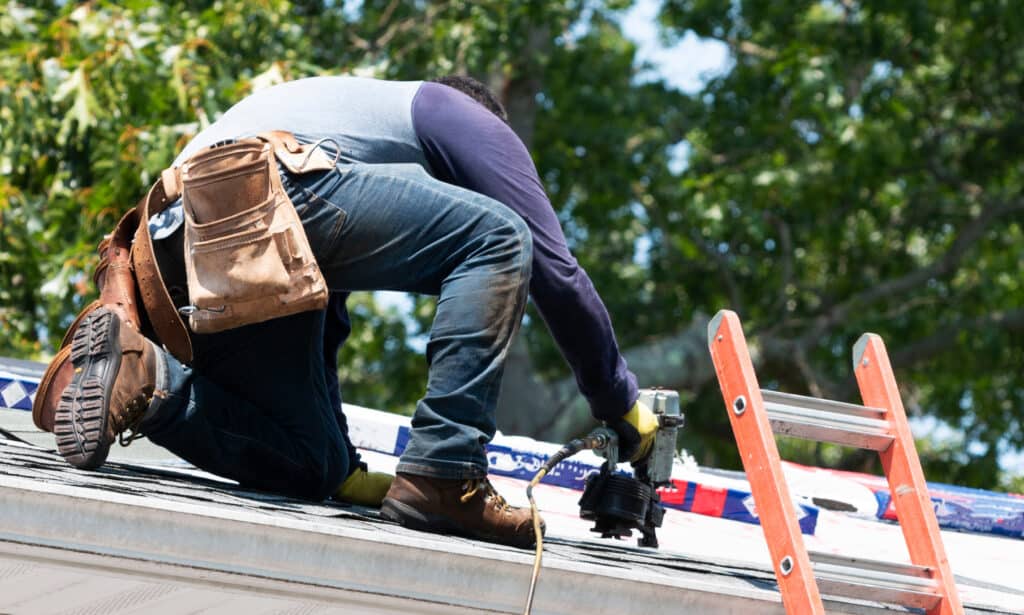
Common Types of Roof Damage
First of all, as a homeowner, you need to have a solid understanding of how your roof can get damaged during a storm. This way, you’re ready to schedule repairs (or do them yourself) as soon as issues arise. Here are the four primary ways your roof was probably damaged:
Hail Damage 🧊
Most modern roofing systems are made with materials that can withstand severe weather, such as hail. However, depending on the size of the hail pieces, you could be looking at some problems. Anything golf-ball sized or bigger could be the cause of dents, discoloration, and damaged shingles.
Wind Damage 💨
Another weather condition to keep an eye out for is wind. Wind damage will completely blow off your shingles and leave your house looking disheveled, so if you live in an area prone to strong winds, you’ll probably opt for roofing materials with a high wind rating.
Water Damage ☔️
Water-damaged shingles and roofing damaged during heavy rains can also wreak havoc on your house, causing leaks and seeping into the interior to potentially ruin your personal belongings. At the very least, you’ll likely be left with some seriously unsightly stains and soft, wet spots on walls and ceilings, leading to further damage if left untreated.
Damage From Debris 🌳
Of course, falling tree limbs and blowing debris can also damage your roof during high winds or a heavy rain storm. Even small branches can leave dents in your roofing and siding, so it’s essential to keep an eye out for the signs of damage from debris, like leaks, holes, and punctures.
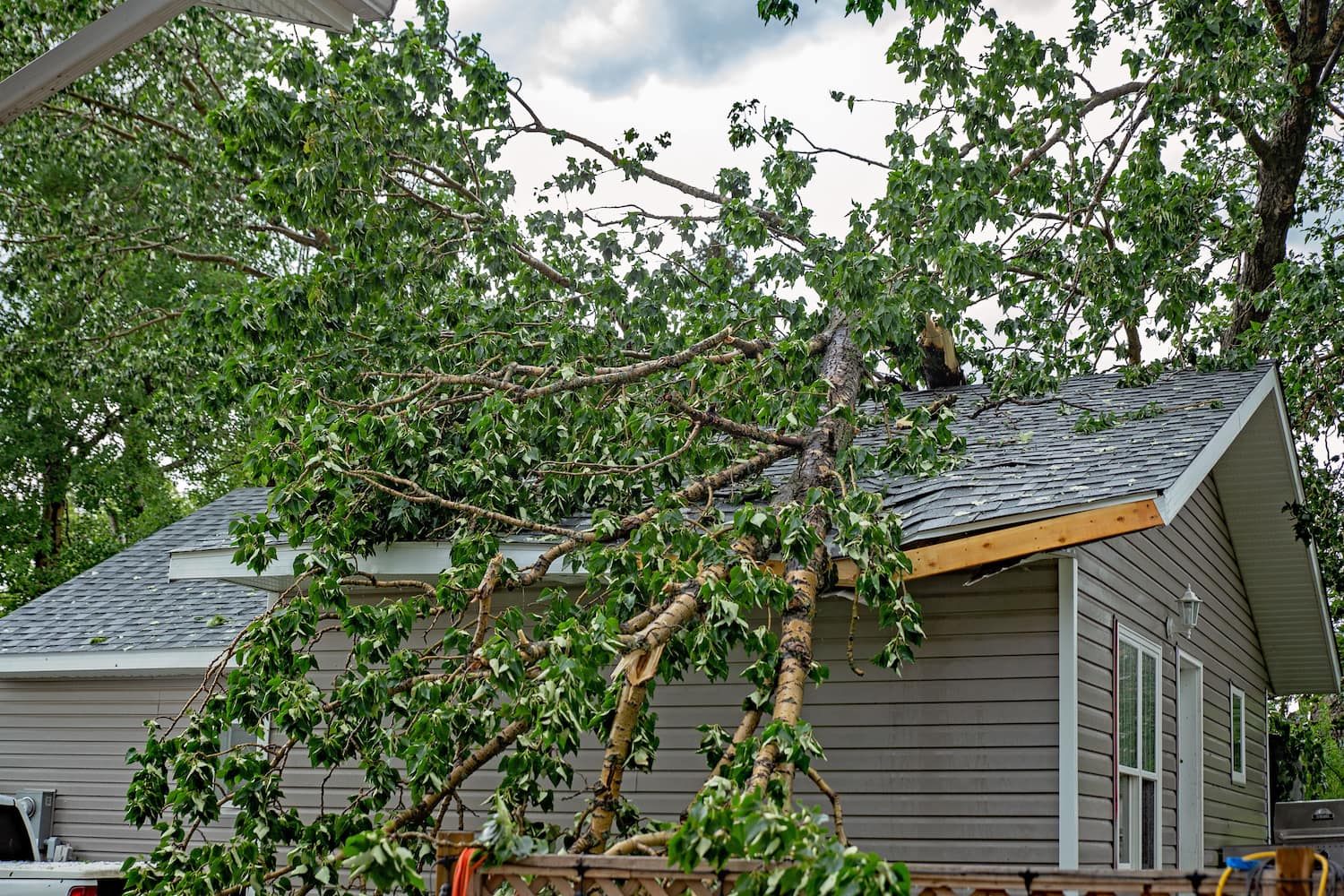
5 Signs of Storm Damage Every Homeowner Should Know ⚠️
After a storm impacts your home, you have to be aware of the most common signs of storm damage, such as:
1.) Blown-off or Missing Shingles
High wind can cause damage to your entire roof, but asphalt shingles are especially at risk. While many modern roofing systems, like a metal roof, are made to withstand even the strongest gusts, you can still get damaged shingles from high winds. This will look like loose or entirely blown-off shingles, which can typically be replaced relatively easily.
2.) Dented & Discolored Shingles
Another sign of storm damage to roofs comes from hail damage. Denting and discoloration of your shingles are a solid indicator that you require repair. Look for small pockmarks on shingle surfaces or missing shingle granules to determine if you have this kind of storm damage.
3.) Excessive Shingle Granule Loss
Asphalt shingles are made from a conglomeration of materials, including tiny granules that give the coating its texture surface. Heavy rain, sun exposure, and even high winds can impact asphalt shingles, and you might start seeing excess granule loss in your gutter system. This is a sign that it’s time to install a new roof.
4.) Leaks, Water Stains, & Wet Spots
If you don’t have proper drainage or your roof’s protective underlayment fails, you could be looking at some water damage both inside and outside your home. You’ll likely see water stains or feel soft, wet areas on the walls and ceilings within your home caused by leaking water.
You might also experience ice dams during the winter when rain and melting ice or snow can’t drain properly away from your roof. Ignoring water damage will almost always lead to future damage down the line.
5.) Punctures or Other Physical Damage
As we already mentioned, high winds can significantly affect roofs, often causing structural damage due to fallen tree limbs and blowing debris. This kind of severe damage typically comes in the form of punctures or outright holes in your home’s exterior.
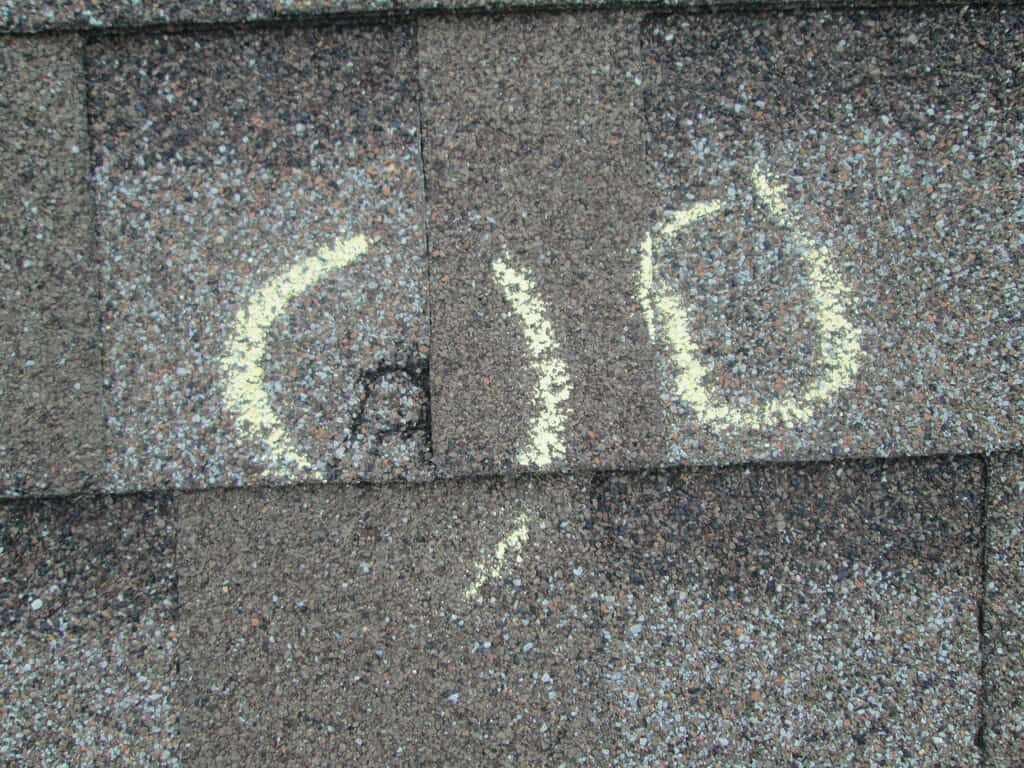
How to Spot Roof Storm Damage 🔍
Now that you know how roof damage occurs and what it can look like, you’ll be more than prepared when bad weather pops up on the radar. After any severe storms, and always when using the proper safety precautions, take time to visually assess your roof from the following areas:
- From the ground – Do you see signs of obvious damage like a fallen tree?
- Inside the attic – Is there any dripping or pooling water up here when it rains?
- Within your home – Have you noticed any soft water spots or stains inside your home?
- Around gutters – Are the gutters cracked, broken, hanging down, or filled with granule buildup?
- At the top of a ladder – Can you identify loose, cracked, or missing shingles from here?
- On your roof’s surface – Is there any missing flashing or damage to chimneys, vents, valleys, skylights, and other roofing features? Use this guide to find the different areas of your roof and assess them to identify roof storm damage.
Have you found signs of storm damage after you inspect these locations? When you identify roof damage, don’t make the mistake of not documenting it, as insurance adjusters and agents and your paperwork for an insurance claim, in general, will require some proof before approving the covered repair costs. And always use extreme caution as the roof is a dangerous place.
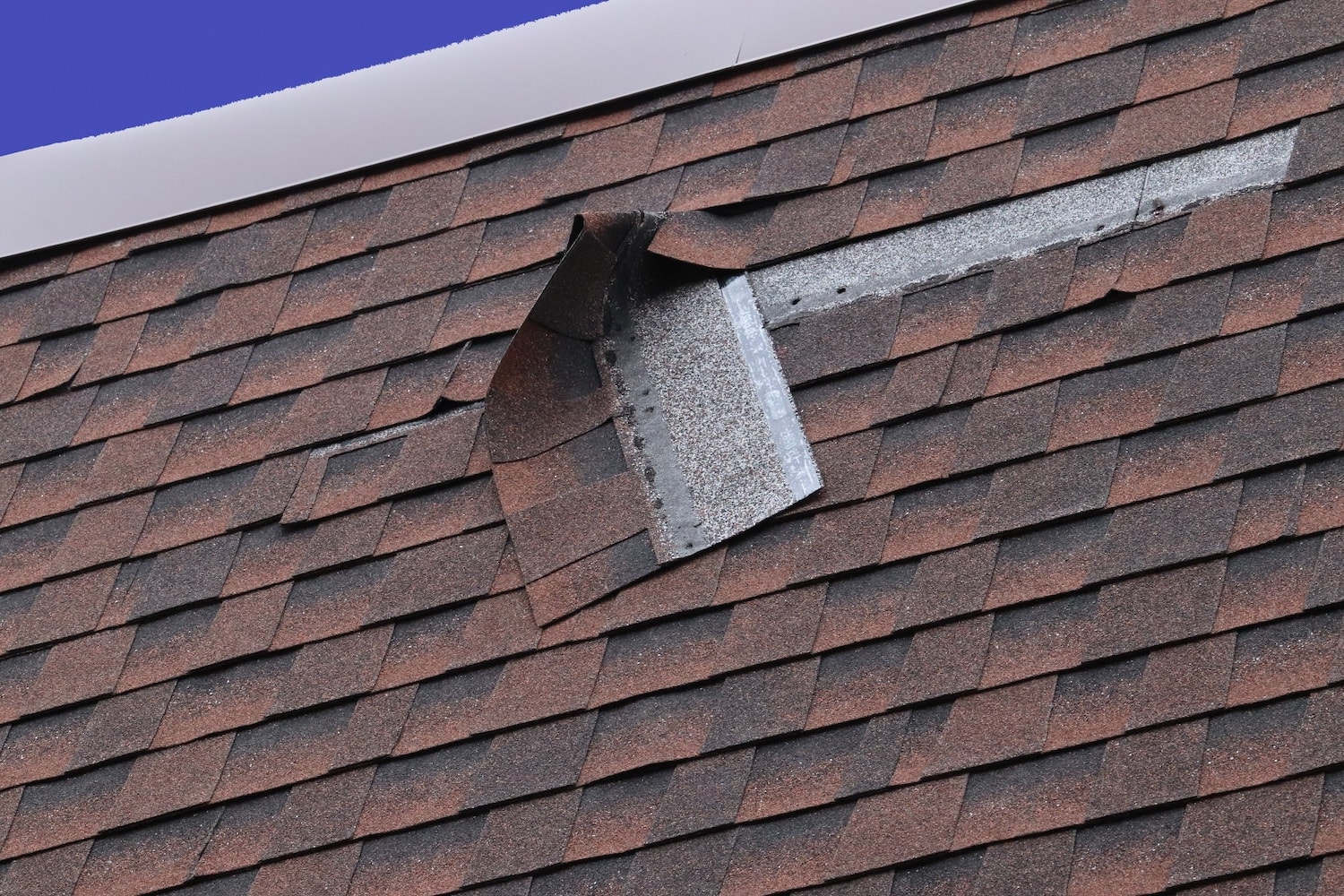
Don’t Forget: Document Everything for the Insurance Company 📸
Typically, homeowners insurance covers the cost of damage to your roof after a storm, depending on your selected coverage. If hail damage or other storm damage to your roof is covered, you’ll need to file a roofing claim through your home insurance provider.
To do so, it’s crucial to have extensive documentation and evidence of your damaged roof. Take pictures, get a quote from a professional roofing contractor, and even provide a “before” photo to prove the extent of the damage and ensure your insurance company covers the full (or at least partial) cost of a roof replacement.
Start Your Storm Damage Repairs Right Away 🛠
Has your home been hit by a nasty storm and left behind a big, messy problem like roof damage? You’ll need to call a trusted roofing contractor to get your roof back into good shape to protect your home.
But don’t worry; whether it’s hail damage or a fallen tree that’s affected you, our team of experienced contractors at Johnson Restoration is always ready to offer fast and affordable roof repair to homeowners after a storm.
Contact us today to talk with our contractors, receive an estimate, and get the help you need — now.
